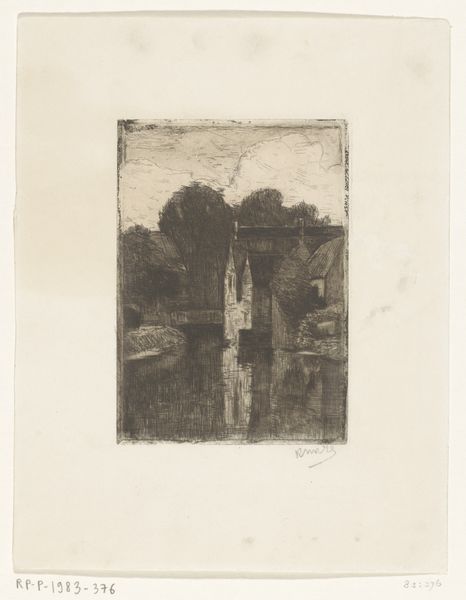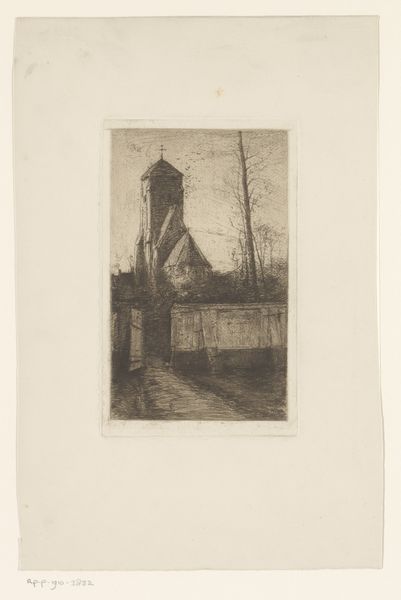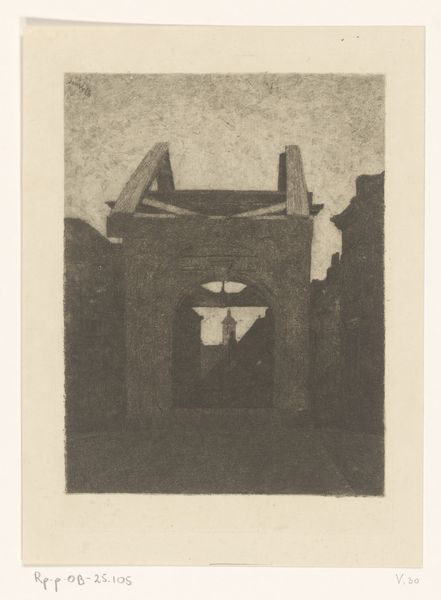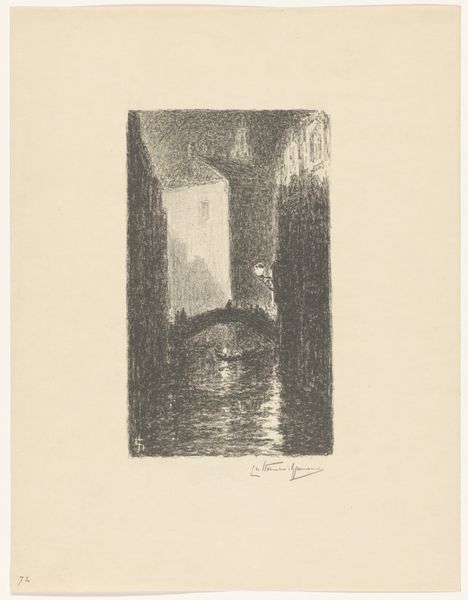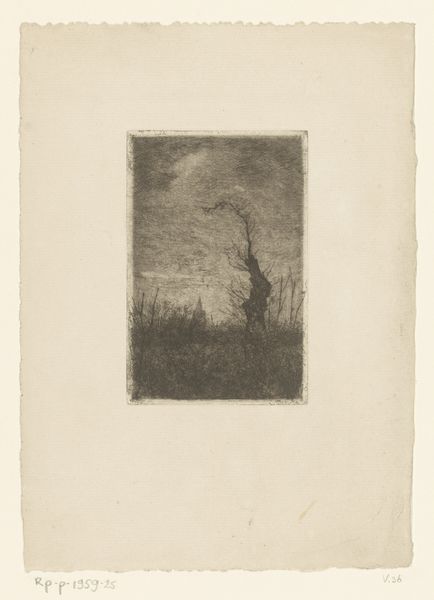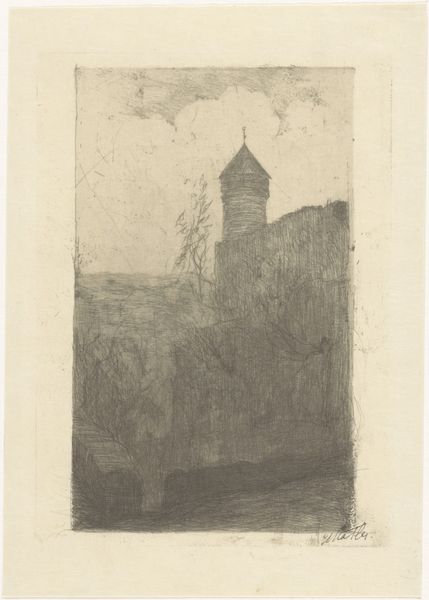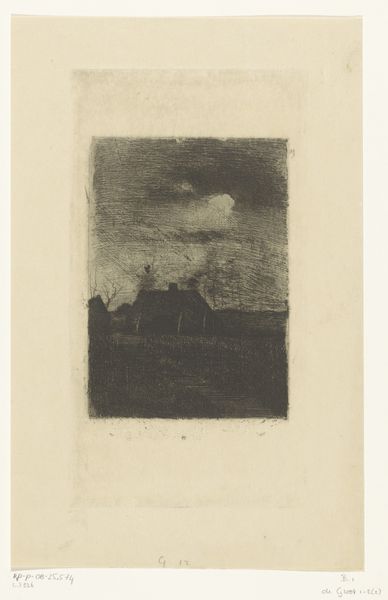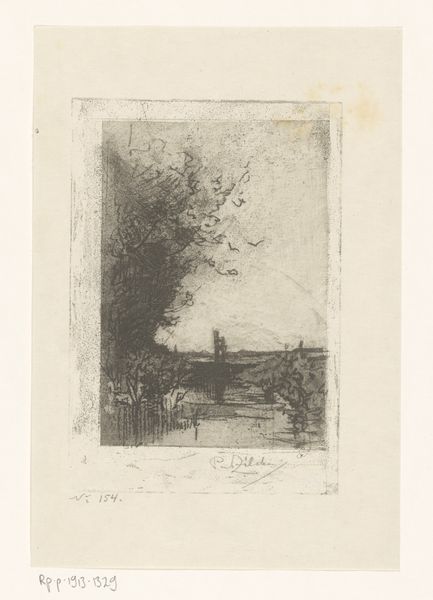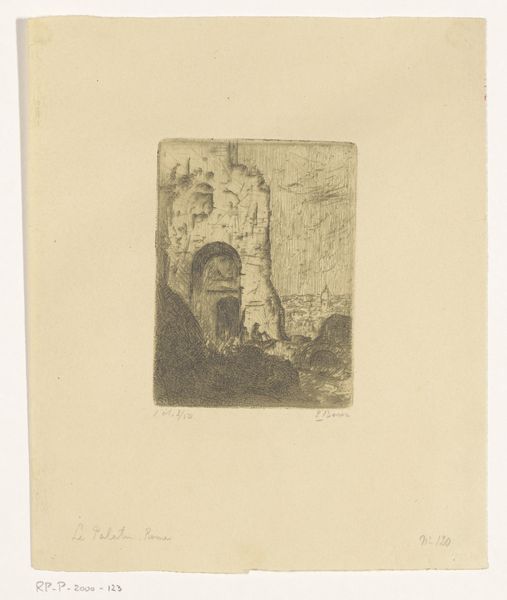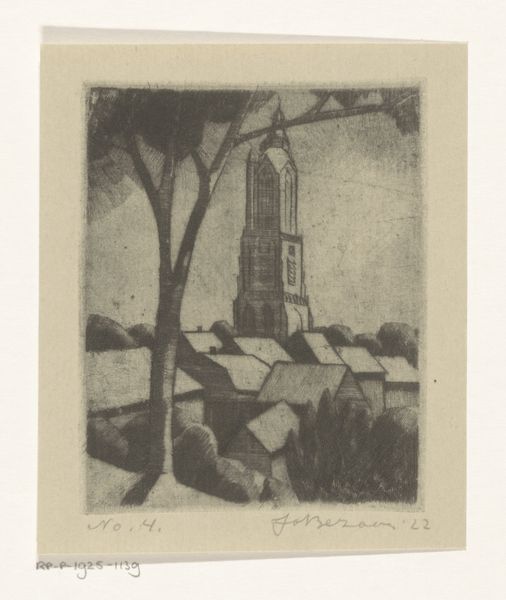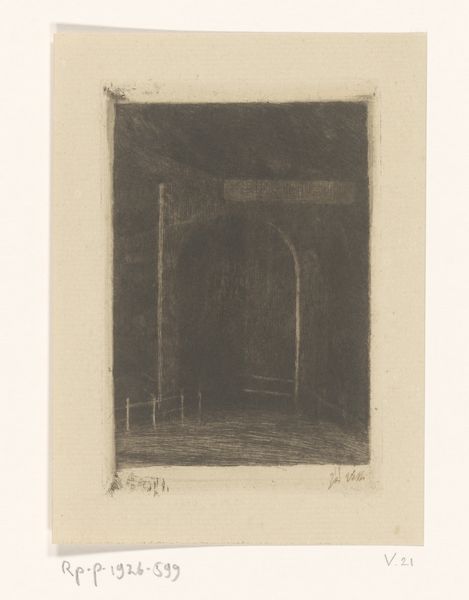
print, etching
#
dutch-golden-age
# print
#
etching
#
landscape
#
cityscape
Dimensions: height 274 mm, width 136 mm
Copyright: Rijks Museum: Open Domain
Curator: Standing before us is Willem Witsen’s “Montelbaanstoren bij avond in Amsterdam,” likely created between 1887 and 1888. It’s a landscape printed via etching that renders the Amsterdam cityscape with a focus on the iconic Montelbaanstoren tower. Editor: My first impression is one of almost overwhelming darkness. It’s a brooding image, with the tower looming mysteriously against a seemingly lightless sky. Curator: The print really leans into the anxieties around industrialization that began to haunt Europe from the late 1800s on. I see a lot here that speaks to a wider understanding of the Netherlands as it entered into this era, struggling with many questions familiar to a young nation in the world order. Editor: Etching, of course, would be Witsen's labor, so what we're seeing, in part, is his manual manipulation of the plate to create these contrasts, from the darkest shadows to that lone, almost shivering point of light. It also shows how easily it could be reproduced which could be seen as Witsen's means of controlling or interacting with mass production. Curator: Right. The piece also stands as a poignant representation of masculinity. This resonates not only with the Netherlands' relationship with Western Europe at the time, but also to how a nation processes their historical relationship to social dominance and political power. Editor: You can almost feel the weather in this, the dampness and chill clinging to the stone. Thinking about materiality, the tower would have been an extremely labor intensive architectural creation that would eventually stand as a background feature for citizens going about their days in a world soon-to-be mechanized. The material is in dialogue with the image's emotional qualities, like the light peeking out from within. Curator: Looking closely at its rendering, the tower in Witsen's “Montelbaanstoren” is definitely a space pregnant with contradictions, symbolic weight, and historical significance. Editor: An exploration into the labor of art as it relates to material reality can really enrich a work's complexity. Thank you for those additional considerations! Curator: And thank you for pointing out its historical and material relevance! Hopefully this piece resonated with our listeners and left them pondering a variety of related questions.
Comments
No comments
Be the first to comment and join the conversation on the ultimate creative platform.
